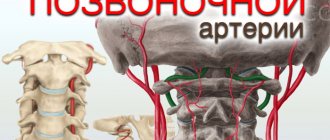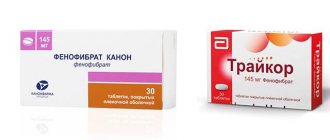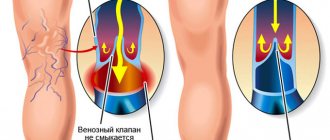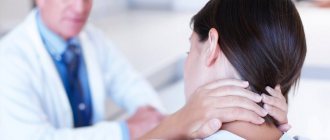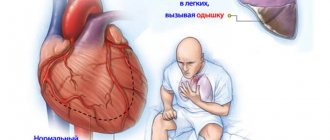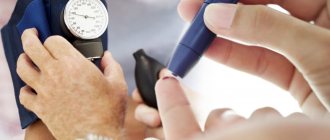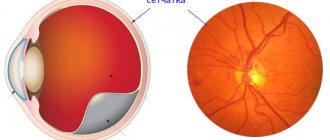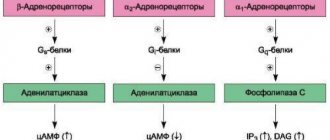Every year the diagnosis of osteochondrosis becomes younger. It is increasingly being diagnosed in schoolchildren and students, and young people suffer from manifestations of radicular syndrome, which seriously complicates their lives. Headache, discomfort in the upper back and neck, decreased vision and hearing, migraines and deterioration of cognitive abilities are the main consequences of cerebral circulation disorders in cervical osteochondrosis. It is important not only to increase blood flow, but also to restore the intervertebral joints. How to improve cerebral circulation with cervical osteochondrosis? The article presents 8 groups of drugs for this purpose, and also provides recommendations for special gymnastics, the regular implementation of which will help improve well-being.
What to choose - traditional methods of treatment or therapy with pharmaceutical drugs?
Cervical osteochondrosis can result in serious suffering for the patient. A sedentary lifestyle, significant excess weight, spinal injuries, and staying in one position for a long time sooner or later lead to abrasion of the intervertebral discs, as a result of which the spinal nerves are pinched. This process can be accompanied by radicular syndrome and also lead to many other pathologies. They may not be externally related to osteochondrosis, but any experienced neurologist will instantly understand “where the legs grow from” in this or that pathology. Every patient with this diagnosis should know how to improve cerebral circulation with cervical osteochondrosis. If symptoms worsen, then it’s time to start a course of treatment.
Symptoms of cervical osteochondrosis, which can increase as cerebral circulation is impaired and the spinal nerve is pinched:
- At the first stage - frequent dizziness, darkening of the eyes, which intensifies when turning the head in different directions. Vision or hearing may deteriorate for no apparent reason, headaches may often occur, constant ringing in the ears, numbness of the tongue, loss of coordination, and decreased performance may begin.
- At the second stage, the patient begins to experience more pain in the neck and shoulders, sometimes radiating to the arms. The headache is more frequent and severe, and the pain partially goes away after a light massage of the cervical-collar area. All symptoms characteristic of the first stage gradually intensify.
- At the third stage, the danger is no longer just in poor circulation and pinched nerves, but also in the possibility of herniated intervertebral discs. As a result, the patient may partially lose mobility of the spine in the cervical region. Due to impaired blood circulation, intracranial pressure may increase, partial headaches, migraines with and without aura may begin.
- At the fourth stage, complete or partial destruction of the intervertebral discs occurs and their replacement with connective tissue. In this case, the patient partially loses his ability to work, suffers from severe pain, vision and hearing can sharply deteriorate to critical levels, and coordination also suffers.
It is possible to improve blood circulation in the brain with cervical osteochondrosis both with the help of medications and with the help of folk remedies. It is impossible to say with certainty that one method is better than another - all patients are individual, and the remedy that suits one may not suit another. The only exceptions are gymnastics and massage - these two methods guarantee improvement of cerebral circulation in cervical osteochondrosis for all patients, regardless of age, gender and stage of the disease. Usually, neurologists, in parallel with the massage course, give directions for physiotherapeutic procedures and exercise therapy. Taken together, such events always produce excellent results.
Some patients are wary of taking medications and purposefully choose exclusively traditional methods of treatment. This approach is quite dangerous, since most traditional methods of treatment are only partially effective. Gymnastics cannot be considered a folk method of treatment; its effectiveness has long been proven, and this method of therapy is classified as physiotherapeutic.
Treatment of cerebral circulation in cervical osteochondrosis should be comprehensive - only with this approach can the progression of the disease be slowed down and long-term remission achieved. After the alarming symptoms subside, you cannot give up - you need to take medications a couple of times a year and visit a physiotherapist’s office, otherwise the disease will make itself known again.
DYSTROPHIC CHANGES IN THE THORACIC SPINE
Apart from osteochondrosis, these are the most common lesions of the spine.
Clinic. Manifestations of the disease in the form of thoracalgia (chest pain) are associated with reflex syndromes and are often accompanied by cardiovisceral, hyperventilation and other syndromes. Clinically, this usually manifests itself as long-term non-healing gastric ulcers, erosive gastritis, cardialgia of unknown origin with ECG changes in the form of ischemia of various parts of the left ventricle, prolonged bronchitis, and disturbances in emotional stability.
Antioxidants to improve overall circulation
Patients and doctors often underestimate the effect of antioxidants. Meanwhile, Mexidol, known to everyone and often prescribed for failure of cerebral circulation, belongs specifically to the group of antioxidants. “Tocopherol” should not be underestimated, and it should be purchased separately (and not as part of a vitamin-mineral complex):
- The release forms of the drug "Mexidol" are tablets and solution for intravenous administration. It is actively used in neurology as a means of improving cerebral circulation in cervical osteochondrosis. The drug is also prescribed for atherosclerosis, vegetative-vascular dystonia, as well as for cognitive impairment of various etiologies. Mexidol is also used in psychiatry to relieve alcohol withdrawal and post-withdrawal syndrome.
- “Tocopherol” can be taken both as part of vitamin-mineral complexes and separately in capsules. In the second case, it will be more effective, since nothing will interfere with its absorption. Vitamin E can slow down the aging process, it has a positive effect on metabolic processes, reduces the total number of platelets in the blood, and restores tissue respiration. When used in combination with nootropics and vasodilators, it can significantly alleviate the condition of a patient with cervical osteochondrosis.
RHEUMATOID ARTHRITIS
Rheumatoid arthritis.
Belongs to the group of systemic autoimmune diseases. Its characteristic feature is the formation of autoantibodies to various types of collagen. One of the components in the mechanism of development of autoimmune diseases is inflammation. With the development of inflammation under the influence of infectious factors (streptococcus-A - in rheumatism, intestinal microbes - in reactive arthritis), its main signs are revealed in tissues and organs - pain, swelling, dysfunction. Impaired microcirculation is one of the early mechanisms of rheumatic inflammation. It is caused by an increase in the permeability of the capillary wall due to cross-hemocirculatory disorders, leading to the development of edema and hyperemia. The role of hypercoagulation factors especially increases (chronic DIC syndrome in chronic rheumatoid inflammation).
It is necessary to note the systemic, progressive, self-sustaining nature of chronic inflammation in autoimmune diseases. Pathological metabolic disorders are diverse. Often, a complex metabolic disorder leads to inhibition of osteogenesis processes. Disruption of metabolic processes in articular cartilage leads to depletion of its main substance in proteoglycans, which causes the destruction of cartilage and the development of deforming osteoarthritis.
Arthrosis and metabolic arthropathy, as a rule, are generalized in relation to damage not only to many joints, but sometimes to internal organs. The central and peripheral nervous systems, especially the autonomic part, are involved in the pathogenesis of functional changes. Patients with rheumatoid arthritis experience symmetrical joint damage, muscle atrophy, osteoporosis, and various trophic disorders.
Treatment. It should be carried out taking into account all links of its pathogenesis. For this purpose, anti-inflammatory, immunomodulating, and painkillers are used. Modern complex therapy also includes physical factors. The use of physical factors has the following goal: to reduce or eliminate pain, reduce signs of general and local inflammatory activity. Due to the effect on the neuroendocrine and vascular components of trophism, it normalizes metabolism in the affected tissues. Influence the violation of immunoregulatory processes. Considering the fact that laser therapy has all of the above properties, it must certainly be part of the complex treatment being carried out. RT is prescribed both as a local effect on the joints and as laser hemotherapy.
Drugs that improve blood access to the brain
How to improve cerebral circulation with cervical osteochondrosis? The easiest way is to start taking medications that directly improve cerebral circulation.
- Cavinton is available in tablet form. When taken regularly, a vasodilating effect is achieved. There is also the drug Cavinton Forte, which contains twice as much active ingredient. When taken, side effects such as headache, dizziness, and drowsiness are possible. some patients, on the contrary, feel cheerful during the course of taking the drug and note an increase in performance.
- "Tanakan" is made from the plant extract of Ginkgo biloba. This plant is famous for its vasodilating effect. During treatment, patients note an improvement in their well-being - headaches go away, the person becomes cheerful, falls asleep and wakes up easier. "Tanakan" is indicated for use by patients with cervical osteochondrosis if they suffer from cerebrovascular accident.
GOUT
Gout. It is considered as a metabolic disease and is characterized by paroxysmal joint pain. Along with acute attacks of pain, gout is characterized by the deposition of salts (sodium urate) in the tissues, resulting in the formation of gouty nodules. In addition to uric acid, they contain a small amount of lime.
Favorite places for salt deposition are the auricles, cartilaginous covers of articular surfaces, especially the metatarsophalangeal joint of the big toe, wrist, and knee joints. This does not exclude the possibility of salt deposits in other joints. In addition to cartilage, the process affects the synovial membrane, periosteum, and tendons.
The joints thus change noticeably. They become swollen, red and painful to the touch. With a long course of the disease, persistent changes in the joints may occur: the ligaments thicken, effusion appears in the joint, and it becomes painful. When moving, a slight crunching sound is heard. Gouty nodes can enlarge over time and change the shape of the joint. In addition to the joints, gout affects blood vessels, usually the vessels of the kidneys and heart; Sclerotic changes occur in the vessels.
Treatment. Patients with gout need dietary, medication and physiotherapeutic treatment. Laser therapy is performed both on the blood (in the absence of contraindications) and locally on the area of the affected joints.
Nootropic drugs for cervical osteochondrosis
Nootropics can significantly improve the well-being of patients with osteochondrosis. The most frequently prescribed drugs:
- "Pantogam" (and its cheaper analogue called "Pantocalcin") today is prescribed even to children. While taking it, improvements in the cognitive sphere are observed, blood circulation is restored (partially or completely - depends on the degree of neurological disorders and diagnosis).
- It is advisable to take “Phenotropil” if, due to a cerebrovascular accident, the patient suffers from impaired attention, memory, and cannot concentrate. Patients who take Phenotropil note the appearance of vigor, vital activity, they are cheerful and efficient. The downside of the drug is its rather high cost (about a thousand rubles per package).
- "Cerebrolysin" is a drug in ampoules for intramuscular administration. The main active component is a peptide (extract from the brain of pigs), which in its structural formula resembles a human one. Typically, neurologists prescribe a course of ten to twenty injections daily. "Cerebrolysin" is a medicine that improves cerebral circulation in cervical osteochondrosis, after injuries and concussions, strokes, etc. This drug is also prescribed to children with delayed speech and mental development.
The use of drugs with a venotonic effect for osteochondrosis
Neurologists prescribe this category of drugs relatively rarely. Venotonics can strengthen the walls of veins and arteries and improve their tone. Good cerebral circulation in cervical osteochondrosis is rare; patients often need to use venotonics in a course if there is a tendency to thinning of the venous walls. The most popular drugs in this category are Phlebodia, Detralex, Escusan. The latter also has the ability to cause short-term dilation of blood vessels due to the presence of alcohol in the composition.
However, patients with cervical osteochondrosis are usually skeptical when a doctor prescribes a drug from the venotonic category. People far from medicine believe that this category of drugs promotes recovery only in cases of severe vein pathology. In fact, even relatively healthy people should take a course of venotonic drugs from time to time.
Doctor prescribing diuretics and osmodiuretics for cervical osteochondrosis
This category of drugs is usually prescribed in cases where cervical osteochondrosis has led to increased intracranial pressure due to compression of the nerves. This symptom is characteristic of the later stages of the disease. If possible, it is better not to let the disease develop serious complications.
Taking diuretics for cerebral edema and increased intracranial pressure (usually prescribed Furosemide or Diacarb) promotes the outflow of excess fluid from all body tissues, including brain tissue. As a result, the pressure stabilizes and the patient feels better.
Possible complications
Lack of timely treatment can lead to serious complications, including:
- bulging intervertebral discs
(formation of hernia/protrusion);
- intervertebral disc rupture,
accompanied by pinching of nerves and blood vessels, which can cause death;
- radiculopathy
(damage to the nerve roots), the formation of osteophytes (spikes on the vertebral body) with the manifestation of numerous paresis and paralysis.
Histaminergic drugs for cervical osteochondrosis: what are they prescribed for?
These drugs are prescribed if poor circulation due to cervical osteochondrosis has led to a lack of coordination and problems with the vestibular apparatus. Histaminergic drugs help normalize blood circulation and the functioning of the inner ear, as a result of which the severity of unpleasant symptoms becomes less. After a course of treatment, dizziness and vestibular disorders may go away for a long time.
Drugs for cerebral circulation in cervical osteochondrosis, which are usually prescribed by a doctor for complaints of problems with coordination - Betaserc, Betagistin, Vestibo. They must be taken in a course of at least ten days. If the patient has parallel pathologies of cardiac activity, then Betaserc can be prescribed for a long period - about several months. Histaminergic drugs have a number of contraindications and side effects, so they should be taken in case of emergency and only after consultation with doctors - a neurologist and cardiologist.
Contraindications
All of the above drugs have contraindications. Let’s combine the main ones into 3 common, most common ones:
- disorders of the kidneys and liver;
- pregnant and lactating women.
The drugs have contraindications, so it is important to read the instructions before use.
The main contraindication for any of these medications is self-prescription, dosage adjustment without the knowledge of the doctor, as well as unauthorized cancellation when prescribing courses of therapy.
Chondoprotectors for restoring articular surfaces and improving blood microcirculation
Tablets for cerebral circulation for cervical osteochondrosis should be taken regularly, in a course. Chondoprotectors are no exception to the rule. Since with cervical osteochondrosis, the layer between the vertebrae inevitably wears out and becomes thinner over time, the patient should take drugs with a chondoprotective effect at least once a year for at least one month. These are “Teraflex”, “Artron” or “Chondroitin”.
"Teraflex" is a combination drug with a chondoprotective effect. Sodium chondroitin sulfate (the main active component of Teraflex) is a high-molecular component directly involved in the formation of joints and cartilage. Indications for use of the drug: dystrophic changes in cartilage and joint tissue, chronic diseases of the musculoskeletal system (osteochondrosis, scoliosis, osteoarthritis, etc.).
"Chondroitin" contains chondroitin sulfate as the main active ingredient. This component is a high molecular weight polysaccharide that is involved in the formation of joint and cartilage tissue. Indicated for use in a wide variety of diseases of the musculoskeletal system, as well as periodontitis, periodontal disease and joint diseases of unknown etiology. The downside of the drug is its rather high cost (about one and a half thousand rubles per package).
ARTHRITES AND ARTHROSIS
Arthritis is an inflammatory disease of the joint. Arthritis can be either an independent disease or a manifestation of some other disease. One of the first clinical manifestations of arthritis is joint pain. It is most intense in the second half of the night and in the morning. Pain relief usually occurs after movement. With the development of the pathological process, changes occur in the soft tissues and capsular-articular apparatus, leading to deformation of the joints, disruption of their function, changes in temperature and color of the skin.
The disease can occur with damage to one joint (monoarthritis) or several (polyarthritis). The onset of the disease can be acute and accompanied by severe pain in the joint (acute arthritis) or develop gradually (chronic arthritis). The causes of arthritis are varied: infection, trauma, allergies, metabolic disorders, diseases of the nervous system, lack of vitamins.
Arthrosis is a group of diseases of a metabolic-dystrophic nature, which typically involve damage to all components of the joint. First of all, cartilage, as well as adjacent to the cartilage, bone, synovial membrane, ligaments, capsule, periarticular muscles. Characterized by pain felt deep in the joints, aggravated by physical activity and relieved by rest, morning stiffness, crunching in the joints, and limited movement in the joints.
The cause of arthrosis is a change in the biological properties of cartilage. These properties can change both under the influence of external and internal environmental factors (gene defects, excess body weight, estrogen deficiency in women, joint injuries, joint surgeries, etc.).
Treatment. Most often, arthritis and arthrosis occur as a result of diseases such as rheumatism, psoriasis, gout, as well as a number of other, most often autoimmune diseases. Laser therapy of joints, in this case, is carried out against the background of drug treatment of the underlying disease, which allows reducing the amount of medications consumed. Treatment involves eliminating the underlying cause of arthritis (arthrosis) and local changes.
If you have the listed diseases, you should not forget that laser treatment of joints should be combined with laser hemotherapy. It is indicated as a desensitizing, analgesic, immunostimulating and decongestant therapy. Treatment regimens for affected joints are given in specific techniques.
Vitamin and mineral complexes
Preparations for cerebral circulation for cervical osteochondrosis containing B vitamins have long established themselves as a simple and reliable way to improve the patient’s condition. It has long been proven that when taken orally, B vitamins are not completely absorbed, but when administered intramuscularly, the necessary components enter directly into the bloodstream and rush to every corner of the body. Most often, neurologists prescribe the following drugs in the form of injections: Combilipen, Milgamma, Neuromultivit. You can buy ampoules of each vitamin separately - “Thiamin”, “Cyanocobalamin”, “Pyridoxine”. You can give yourself injections at home, or you can visit a doctor’s office at a clinic on a regular basis. The minimum course of injections for cervical osteochondrosis is ten days.
Pentovit can be used as tablets that improve cerebral circulation in cervical osteochondrosis. This drug contains the entire complex of B vitamins. Some neurologists prescribe a fairly high dosage, since it allows you to level out the difference between the amount of active substances that is completely absorbed by the body and the amount that came with the tablets. Patients with serious pathology should know how to improve blood circulation with cervical osteochondrosis. Preparations with B vitamins are a simple and affordable way to improve cerebral circulation and get rid of the symptoms that accompany this disorder.
ARTHROPATHIC PSORIASIS
Arthropathic psoriasis. The most severe form and less manageable in terms of treatment in patients with psoriasis is arthropathic. According to established tradition, psoriasis still refers to skin diseases, although the systemic nature of this process and the ability of psoriasis to affect not only the skin, but also internal organs, the nervous system and joints have been established.
Psoriatic arthritis is characterized as a systemic process in which the most pronounced changes appear in the structure of connective tissue. Psoriatic arthropathy can occur benignly as monoarthritis or in the form of polyarthritis, and in some patients it takes on the character of severe destructive polyarthritis. Psoriatic arthritis often occurs in parallel with skin lesions or slightly later, and in some cases, articular syndrome may precede skin manifestations.
Joint involvement usually begins in the distal interphalangeal joints of the hands and feet. Gradually, medium and large joints are involved in the process, including the spine, with the development of ankylosing spondylitis (ankylosing spondylitis). Swelling, pain, and limited joint mobility are noted as a result of infiltration and compaction of the periarticular tissues. In the further course of the process, dislocations, subluxations, and ankylosis can form, leading to joint deformities, and the patient becomes completely disabled.
In addition, a progressive asthenic state sets in, up to cachexia, myalgia, atrophy of the muscles of the hands, forearms, and legs (12-15%). As with ordinary psoriasis, in patients with psoriatic arthropathy, insufficiency of liver and kidney function, immunodeficiency states, and cardiovascular pathology are determined.
Treatment. As with rheumatoid arthritis, treatment is comprehensive and is aimed at eliminating the manifestations of the disease, restoring metabolism in the articular cartilage and preserving the function of the affected joints. Drug therapy is aimed at achieving a desensitizing, detoxifying and anti-inflammatory effect.
We have already mentioned earlier that laser therapy has all these properties, and, in addition, it also has an immunocorrective effect - it must be included in the treatment process. Laser therapy is carried out both by affecting the blood (LHT) and locally on the area of the affected joints.
